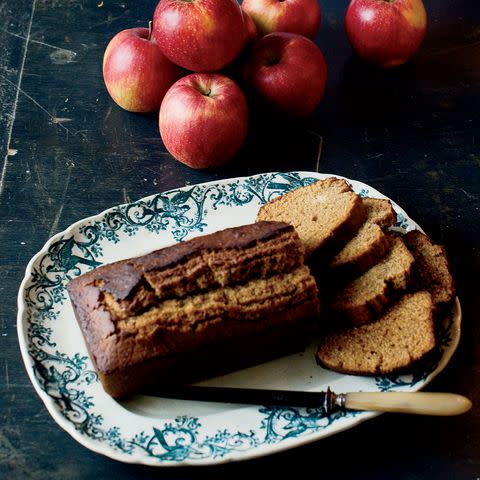This Earthy, Nutty Flour Is the Easiest Way to Transform Your Desserts
Buckwheat flour is the baker’s secret to more depth in your cookies, cakes, and more. Here’s how to use it.

Food & Wine / Photo by Victor Protasio / Food Styling by Torie Cox / Prop Styling by Lydia Pursell
I first fell in love with buckwheat when I tried a buckwheat and hazelnut cake called Buchweizenkuchen at a mountainside bakery in the Dolomites. Each bite had a distinctive earthy-nutty depth punctuated by toasty, buttery hazelnuts and a tart berry jam. Since then, this flavor-forward flour has regularly appeared in my bakes.
Native to Central Asia and related to rhubarb, buckwheat is a pseudocereal that has been cultivated for thousands of years across the globe. Confusingly, buckwheat is not related to wheat at all. In fact, it is gluten-free. (Someone needs to talk to the marketing department.) The caltrop-shaped seeds, known as groats, are rich in protein, fiber, B vitamins, and minerals including manganese and copper.
Related: 12 Ways to Cook With Buckwheat for Blinis, Blecs, and Beyond
Cooks and bakers can employ buckwheat for jobs across the kitchen. The groats can be cooked whole for traditional Eastern European and Jewish kasha, or they can be ground into flour for baking or noodles. Buckwheat flour is a key ingredient in dishes from around the world like soba noodles, buckwheat crepes (aka galettes), and blini.
Beyond its culinary uses, buckwheat is prized for its environmental benefits; it grows well in poor soil conditions and cooler climates, makes a great cover crop, and is often used in crop rotations to add nutrients back to the soil. This makes it a sustainable choice for farmers, and an increasingly popular option for health-conscious consumers looking for nutritious, gluten-free alternatives.
How to use buckwheat flour in desserts
Using buckwheat flour in baked goods is simple, but be careful not to compromise the structure of your desserts; start by swapping about a quarter of all-purpose flour in a cake or cookie recipe for buckwheat flour to give it a nutty depth. I’ll swap out one-third of the all-purpose flour when I make flaky or shortcrust pastry to add a kick to the crust.
You can also use one hundred percent buckwheat flour to make gluten-free cakes, muffins, scones, and cookies, though you’ll want to once again keep in mind that it’s not a 1:1 swap for other types of flour; try a recipe like Layered Parnsip Cake before experimenting with buckwheat flour for your own gluten-free desserts. Beyond flour, you can use whole buckwheat groats in a fruit crisp or granola to add some crunch atop a muffin or cookie.
Related: An Easy Trick for Crispier Granola
Buckwheat pairs well with assertive flavors and spices like rhubarb, raspberry, cardamom, and hazelnuts. But my favorite co-star has to be chocolate — think buckwheat chocolate chip cookies, buckwheat and chocolate shortbread, or a simple buckwheat-chocolate cake. Here are some other delicious ideas that make the case for adding buckwheat flour to your pantry.
Olive Oil Cake with Buttercream Frosting and Sour Candied Oranges

2021 F&W Best New Chef Paola Velez uses a combination of all-purpose and buckwheat flours in this stunning spiced cake for additional depth.
Lemon-Buckwheat Shortbread

2017 F&W Best New Chef Nina Compton uses equal parts all-purpose and buckwheat flour to make these buttery lemon sandwich cookies.
Sourdough Cookies

These richly spiced cookies from chef Sarah Owens have a robust grain flavor from sourdough discard and a combination of spelt, rye, and buckwheat flours.
Pain d'Épices

This deeply spiced gingerbread from cookbook author Mimi Thorisson uses three types of flour — whole-wheat, buckwheat, and all-purpose — for a hearty flavor and crumb.
Gluten-Free Vollkornbrot (German Bread)

This nutritious, and wholly gluten-free bread from chef Ava Celik includes both buckwheat flour and buckwheat groats.
Layered Parsnip Cake with Candied Kumquats

This earthy cake from chef Anya Kossoff is both vegan and gluten-free thanks to a combination of millet and buckwheat flours, and a frosting made from vegan cream cheese.
For more Food & Wine news, make sure to sign up for our newsletter!
Read the original article on Food & Wine.


